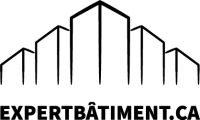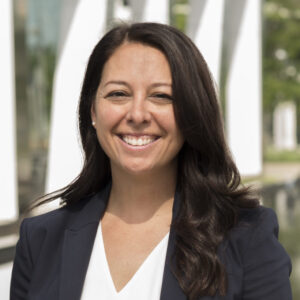Since February 15, 2024, new regulations have authorized professional technologists, whose expertise lies in architecture and engineering, to practice certain professional activities previously reserved (since September 2020) exclusively for architects and engineers.
The Ordre des architectes du Québec (OAQ), the Ordre des ingénieurs du Québec (OIQ) and the Ordre des technologues professionnels du Québec (OTPQ), in accordance with the Professional Code and the laws governing architects and engineers, have agreed to share professional activities.
This agreement marks an important milestone in the profession of professional technologists. They will now be able to contribute their expertise to architectural and engineering projects. Let’s take a closer look at how the practice of professional technologists will change as a result of this sharing of acts, and what impact it will have on construction in Quebec.
FIRST OF ALL: WHAT IS A RESERVED ACT?
In Quebec, a reserved act is a specific professional activity that is exclusively authorized to be performed by members of a professional order. These acts are defined by the Professions Act and are intended to protect the public by ensuring that only qualified professionals perform certain tasks.
In short, reserved acts guarantee the quality, safety and conformity of the professional services offered.
As far as the activities permitted by the regulations are concerned, these are activities shared by architects and engineers with the public works sector, and not reserved for the public works sector.
WHAT DO THE NEW REGULATIONS COVER?
ENGINEERING – Excerpt from: “Regulation respecting the professional activities that may be carried out by a professional technologist whose competence lies in engineering technology.”
ENGINEERING – Excerpt from: “Regulation respecting the professional activities that may be carried out by a professional technologist whose competence lies in engineering technology.”
SECTION II PROFESSIONAL ACTIVITIES CARRIED OUT UNDER A MONITORING, INSPECTION OR TESTING PLAN
Section 2 – A professional technologist may engage in a professional activity covered by this section when the following conditions are met:
1- this activity and the monitoring, inspection or testing plan relate to the same individual work;
2- the monitoring, inspection or test plan is signed and sealed by an engineer.
Article 3 – A professional technologist may, in accordance with the requirements, parameters, standards and specifications set out in a monitoring plan, carry out the following professional activities:
1° carry out a quantity count;
2° perform a quality control test on a material;
(3) prepare, modify, sign and seal a deficiency list;
4° certify the conformity of a shop or plant drawing that has been prepared in accordance with the requirements, parameters, standards and specifications indicated in the plans and specifications for the work, when the preparation of this certification does not require a calculation based on engineering principles.
Clause 4 – A professional technologist may, according to the requirements, parameters, standards and specifications indicated in an inspection plan whose purpose is the maintenance or upkeep of a structure’s assets, prepare, modify, sign and seal a list of defects or deteriorations relating to one of the following structures:
(1) a structural component or a mechanical, electrical or thermal system of a building other than a very high-risk industrial facility;
2° a road structure and its appurtenances, with the exception of an engineering structure other than a retaining wall or culvert;
3° a work to which a document referred to in article 9 relates.
Article 5 – A professional technologist may, in accordance with the requirements, parameters, standards and specifications indicated in a test plan, carry out a test based on engineering principles and prepare, modify, sign and seal a report relating to this test.
Section 6 – Any document prepared, amended, signed or sealed by a professional technologist pursuant to this section shall refer to the monitoring, inspection or testing plan.
Article 7 – A professional technologist shall report to the engineer responsible, as the case may be, for the supervision of the work, the inspection of the structure or the conduct of tests, when he observes a non-conformity with the supervision, inspection or test plan or an unforeseen element likely to lead to a change in the original design of the structure.
SECTION III PROFESSIONAL ACTIVITIES CARRIED OUT IN ACCORDANCE WITH PLANS AND SPECIFICATIONS
Article 8 – A professional technologist may engage in a professional activity referred to in Article 9 when the following conditions are met:
(1) this activity and the plans and specifications and any written notices relate to the same individualized work;
(2) all requirements, parameters, standards and specifications according to which this activity is carried out are indicated in the plans and specifications or in a written notice;
(3) the plans and specifications and, where applicable, the written notice state that they may be used for the purposes of an activity referred to in section 9 and are signed and sealed by an engineer;
4° this professional activity is not related to one of the following works :
a) a protective device designed to ensure the safety of industrial equipment;
b) a nuclear facility or prescribed equipment as defined in the Nuclear Safety and Control Act (S.C. 1997, c. 9);
c) a structure installed in a very high-risk industrial establishment within the meaning of the Construction Code (chapter B-1.1, r. 2) or in a hazardous location within the meaning of the Canadian Electrical Code, Part I, as incorporated into the Construction Code.
Article 9 – A professional technologist may, according to the requirements, parameters, standards and specifications indicated in plans and specifications, prepare, modify, sign and seal the following documents:
1° a wiring diagram of a control, instrumentation or regulation device for an industrial-scale process or for a mechanical, thermal or electrical building system;
2° a component layout diagram for a control or regulation panel that is part of an industrial-scale process or a mechanical, thermal or electrical building system;
(3) a diagram of piping, tubing, installation, assembly, connection or location of a piping installation intended to contain one of the following substances: a) a flammable gas or liquid with a gauge pressure not exceeding 689 kPa; b) a non-flammable gas with a gauge pressure not exceeding 1,720 kPa; c) a non-flammable liquid with a gauge pressure not exceeding 50,000 kPa;
(4) a connection and control diagram for an electric motor with a maximum power rating of 38 kW, a maximum phase-to-phase voltage of 600 V and a power supply point specified in the plans and specifications and designed specifically for this work;
5° a location or power supply diagram for a lighting fixture with an electrical voltage of 347 V or less, or for one of its devices;
6° a calculation to determine the required number and positioning of lighting fixtures with a maximum electrical voltage of 347 V;
7° a diagram showing the location or installation of grounding, earth continuity, electrical cable trays, instrumentation or communications for electrical equipment or lightning arresters;
(8) a location or installation diagram or shop drawing of plumbing, heating, air-conditioning, ventilation, refrigeration or control equipment. Subparagraph 3 of the first paragraph does not apply in the case of a piping installation located in a care or detention facility. The same applies to fire protection systems.
Article 10 – Any document prepared, amended, signed or sealed by a professional technologist pursuant to this section may not be produced before the plans and specifications according to which it was prepared or amended and must refer to the latter and, where applicable, to the written notice.
SECTION IV SELF-EMPLOYED PROFESSIONAL ACTIVITIES
Article 11 – A professional technologist may prepare, modify, sign and seal the following documents: 1° a distribution plan for an electrical installation within the meaning of the Construction Code (chapter B-1.1, r. 2) that meets the following conditions:
a) it is supplied solely by a public electricity distributor;
b) it is not in a care or detention facility or in a very high-risk industrial establishment;
c) its electrical power demand does not exceed 120 kVA; d) its phase-to-neutral voltage is not more than 120 V;
2° a load calculation for an electrical installation referred to in paragraph 1°;
3° a wiring diagram or component layout diagram of a control or regulation panel when the following conditions are met:
a) the neutral phase voltage of this panel is not more than 120 V;
b) the purpose of this diagram is for the panel to be installed by a manufacturer accredited by a certification organization recognized by the Régie du bâtiment du Québec;
(4) a maintenance manual for a control panel produced by its manufacturer, if the manufacturer is accredited by an organization recognized by the Régie du bâtiment du Québec and the condition set out in subparagraph a of paragraph 3 is met;
(5) a marking plan for a public road on which the speed limit is 70 km/h or less, other than a temporary marking plan for a work zone.
Article 12 – A professional technologist may supervise work related to a structural component or a mechanical, electrical or thermal system of one of the following buildings:
1° an agricultural establishment, other than a silo or an animal waste storage facility;
2° a building, other than an industrial establishment, governed by Part 9 of the National Building Code, as incorporated into the Construction Code (chapter B-1.1, r. 2).
A professional technologist may engage in the activity provided for in the first paragraph when the following conditions are met:
1° the plans and specifications must be specific to the work being carried out and must be intended for the purpose of carrying out the work;
(2) plans and specifications are signed and sealed, as the case may be, by an engineer or a professional technologist authorized to sign and seal them under this by-law.
The professional technologist’s certificate of compliance must refer to the plans and specifications.
When the professional technologist finds that an unforeseen element is likely to result in a change to the original design of the work, he shall notify the engineer or professional technologist who signed and sealed the plans and specifications.
Article 13 – A professional technologist may inspect, for maintenance or asset maintenance purposes, a structural element and a mechanical, electrical or thermal system of a building referred to in article 12, and prepare, modify, sign and seal a report relating to this inspection.
ARCHITECTURE – Excerpt from: “Regulation respecting the professional activities that may be carried out by a professional technologist whose competence relates to architectural technology.”
ARCHITECTURE – Excerpt from: “Regulation respecting the professional activities that may be carried out by a professional technologist whose competence relates to architectural technology.”
Article 3 – A professional technologist may supervise work relating to the construction, enlargement or alteration of a building, when the following conditions are met:
1-he uses plans and specifications that are signed and sealed by an architect and that relate to :
a) one of the buildings referred to in Part 9 of the National Building Code, as incorporated in Chapter I of the Construction Code (chapter B-1.1, r. 2), or a combination thereof;
b) an agricultural establishment having, after completion of the work, not more than one storey and less than 1,050 m2 of building area, or not more than 3 storeys and less than 600 m2 of building area;
2- the architect has forwarded to him all documents and information relating to the building and its plans and specifications in order to ensure the integrity of the project.
Clause 4 – A professional technologist may, to meet site requirements, modify any plans and specifications for a building under his supervision, provided such modification does not change the use of the building or significantly affect its structural integrity, fire walls or partitions, exits and accesses, or envelope.
Section 5. A professional technologist may prepare, amend, sign and seal any report, attestation or written notice relating to the work he supervises in accordance with section 3.
Article 6 – A professional technologist may engage in a professional activity reserved for architects when it relates to either :
- Isolated single-family dwellings;
- To the insertion of a single, non-repetitive single-family dwelling between existing row dwellings or its addition at their end;
- Expansion or modification of a single-family dwelling, semi-detached or row house.
The buildings referred to in the first paragraph must have, after completion of the work, no more than one basement storey, a building height not exceeding 3 storeys and a building area of less than 600 m2.
WHAT IMPACT WILL THE CHANGES HAVE ON THE NEW REALITY OF PROFESSIONAL TECHNOLOGISTS’ PRACTICE?
Increased collaboration: collaboration between professional technologists, engineers and architects will be strengthened. Project teams will benefit from a diversity of skills and a multidisciplinary approach, which will enhance the quality of results.
Cost reduction: with the addition of T.P. to the design and monitoring process, companies can potentially reduce costs by optimizing resources and avoiding redundancies.
Adapted to current needs: these regulations reflect an evolving profession, adapted to the industry’s current needs. They will enable professional technologists to play a more active role in the realization of construction projects in Quebec.
Public safety: Members of a professional order are fully accountable for the activities they perform. Their obligations in terms of professional liability insurance, ongoing training and professional ethics help to ensure public safety throughout the various stages of a project.
In conclusion, it will be interesting to see and follow the impact of these changes for architecture and engineering professionals over the coming years. Opening up opportunities for professional technologists will undoubtedly contribute to a more dynamic and innovative construction industry in Quebec.
USEFUL LINKS & SOURCES
- Regulation respecting the professional activities that may be carried out by a professional technologist whose expertise lies in architectural technology.
- Regulation governing the professional activities that may be carried out by a professional technologist whose competence lies in an engineering technology.
- Guide to interpreting the regulations and frequently asked questions on the OTPQ website
The information provided in this article is for informational purposes only and does not constitute legal advice. Although Expertbâtiment endeavours to maintain the accuracy and relevance of the extracts of law presented, we cannot guarantee their completeness.









